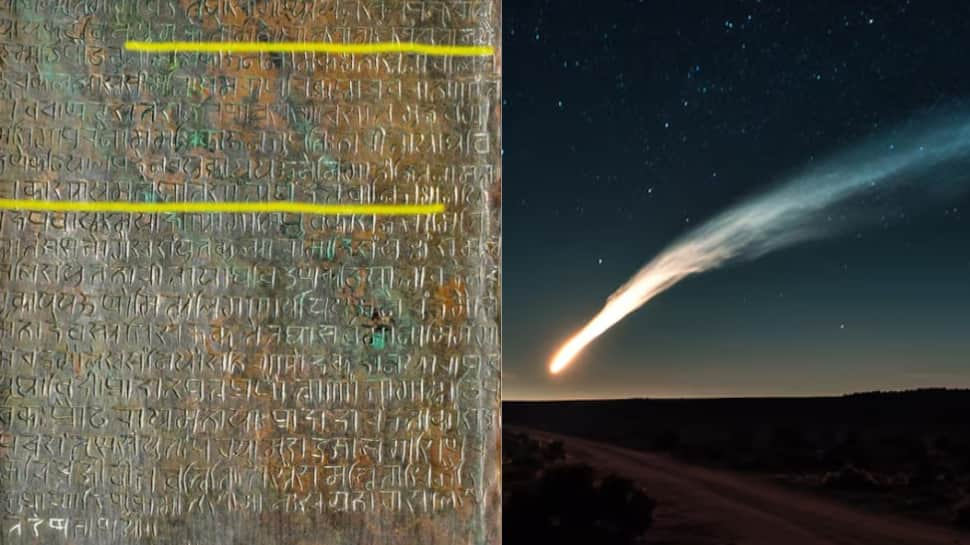What if a mysterious comet lighting up the skies centuries ago was not only seen but documented, in metal? In an extraordinary revelation, a 15th-century copper plate inscription discovered at the Mallikarjuna Swamy Temple in Srisailam, Andhra Pradesh, has unveiled India’s first known epigraphic reference to Halley’s Comet. Dated June 28, 1456 CE, this ancient document from the Vijayanagara Empire is changing how we understand India’s engagement with astronomy.
A Cosmic Phenomenon Recorded in Time
Etched into the durable copper plate is a legal land grant issued by Vijayanagara king Mallikarjuna, addressed to a Vedic scholar. Amid the royal decrees and religious declarations, historians noticed something stunning: a mention of a brilliant celestial object visible in the sky.
Astronomers quickly matched this to Halley’s Comet, which made a dramatic appearance in the summer of 1456, documented across Europe and Asia. Its timing aligned perfectly with the inscription’s Indian calendar date of śaka 1378, dhātr̥ āṣāḍha ba. 11, which converts to the exact day Halley’s Comet dazzled the skies.
More Than Just Myth: From Vedas to Verified Science
Ancient Indian scriptures like the Ṛigveda, Atharvaveda, and Bṛhat Saṃhitā have metaphorically referenced comets, often seen as harbingers or omens. However, this inscription marks the first direct and date-specific mention of an actual cometary event, verified by modern astronomical data.
Written in classical Telugu and Sanskrit, the document represents a blend of science, religion, and governance, where even the sky was recorded in the legal chronicles of the empire.
Why This Discovery Matters
This is not just a historical curiosity. It proves that medieval Indian scholars were observing and noting celestial events with startling accuracy. The fact that such an observation made its way into a royal land grant hints at the comet’s perceived importance, possibly symbolic, possibly superstitious, but undeniably scientific.
Moreover, this copper plate showcases the scientific sophistication of the Vijayanagara era, which not only had a strong cultural and political legacy but also possessed a surprisingly refined grasp of astronomical phenomena.
A Testament to Ancient India’s Skywatchers
The copper plate does more than document a grant, it offers a window into a time when astronomy and governance coexisted. The knowledge that this wasn’t just a passing visual but something chronicled in official inscriptions points to a systematic tradition of astronomical record-keeping that historians are only now beginning to appreciate.
This discovery is a reminder of India’s rich scientific heritage and how the observational brilliance of its ancient scholars could match, and sometimes exceed, that of their global counterparts.
Rewriting the Sky’s Footnotes
The “Pharaoh’s Curse” may have given us potential cancer cures, but India’s 15th-century sky watchers have given us something equally profound, a comet’s trail through time, etched in copper and confirmed by modern science. As we continue to explore the cosmos with telescopes and satellites, it’s humbling to realise that centuries ago, scholars without such tools were still watching, recording, and wondering, just like us.
This single inscription doesn’t just add to India’s history; it connects the stars across centuries, reminding us that curiosity about the universe is the most ancient legacy of all.
#Indias #Record #Halleys #Comet #Copper #Plate #Discovery #Rewriting #History
Halley
latest news today, news today, breaking news, latest news today, english news, internet news, top news, oxbig, oxbig news, oxbig news network, oxbig news today, news by oxbig, oxbig media, oxbig network, oxbig news media
HINDI NEWS
News Source


